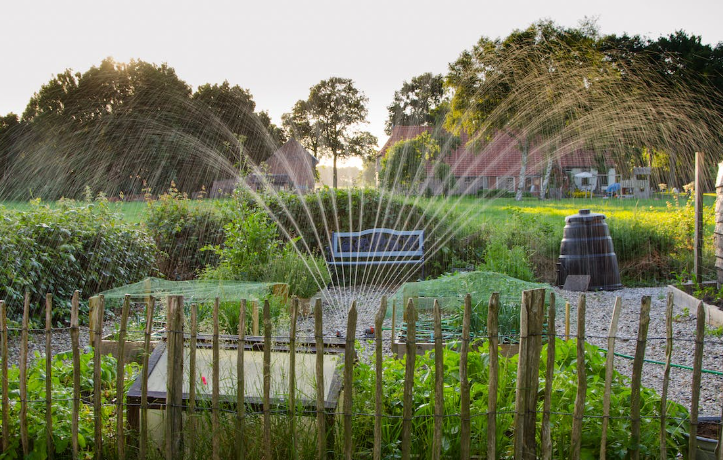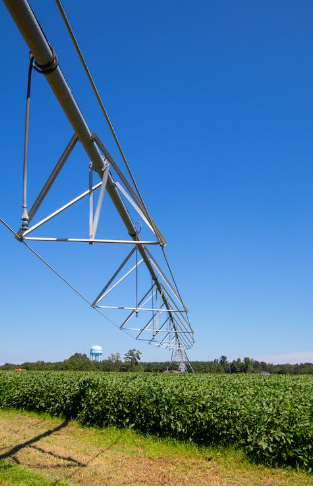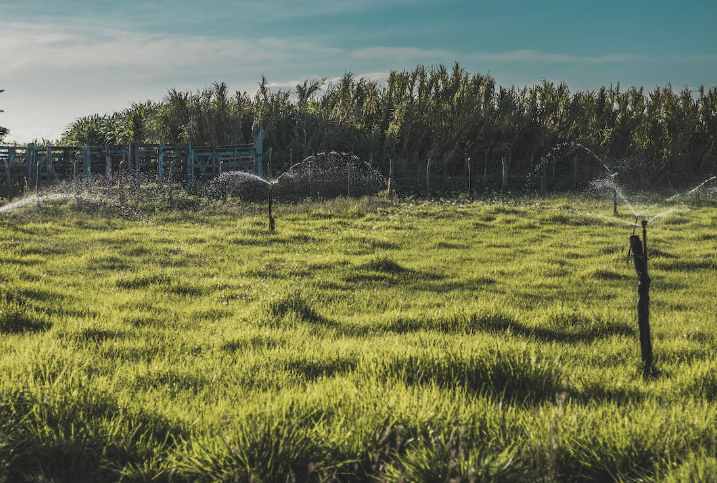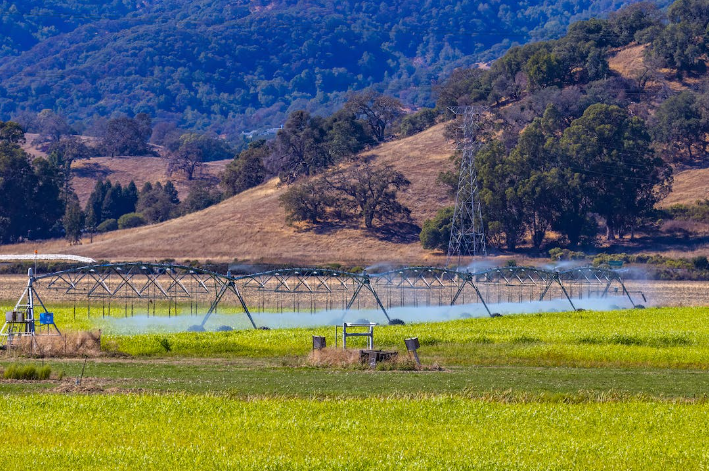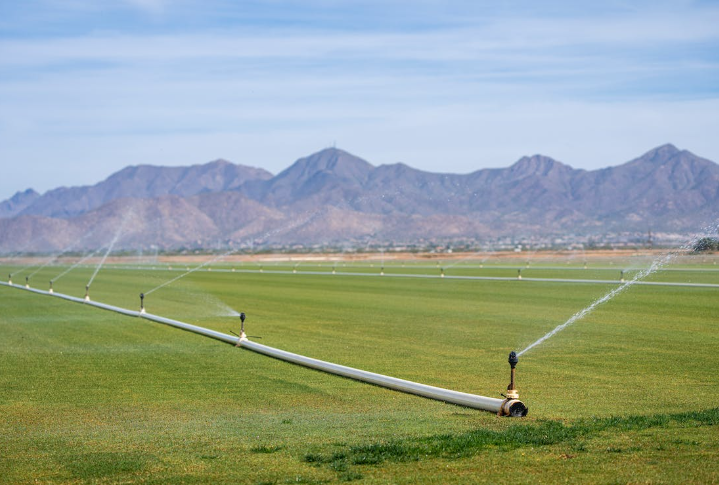Irrigation is the process of artificially providing water to crops and plants in order to promote their growth and development. This practice has been around for thousands of years, and it has played a critical role in the development of agriculture and the growth of human civilization. One of the most important resources for irrigation is water, which is necessary for the growth and survival of plants.
Water is an essential resource for all life on earth, and it is particularly important for the growth of plants. Plants need water for a variety of reasons, including photosynthesis, transpiration, and nutrient uptake. Water is also important for maintaining the temperature and structure of plant cells. Without water, plants would not be able to grow, and they would eventually die.
In many parts of the world, water is a scarce resource, and it must be managed carefully in order to ensure that it is used efficiently and effectively. This is particularly true in arid and semi-arid regions, where rainfall is limited and irrigation is necessary for crop production. In these regions, one of the most important resources for irrigation is groundwater.
Groundwater is water that is stored in underground aquifers. It is replenished by rainfall and other sources of surface water, and it can be accessed through wells and other types of groundwater pumping systems. Groundwater is an important resource for irrigation because it is often more reliable than surface water sources such as rivers and lakes. Groundwater is also less vulnerable to evaporation and other types of losses, which makes it a more efficient source of water for irrigation.
However, the use of groundwater for irrigation can also have negative consequences. Overpumping of groundwater can lead to the depletion of aquifers, which can cause land subsidence and other types of land-use changes. In some cases, overpumping can also lead to the contamination of groundwater with salts, minerals, and other substances that can be harmful to plants and animals.
Another important resource for irrigation is surface water. Surface water refers to water that is found in rivers, lakes, and other types of bodies of water on the earth’s surface. Surface water is an important resource for irrigation because it is often readily available and can be transported to fields and crops using irrigation canals and other types of irrigation systems.
However, the use of surface water for irrigation can also have negative consequences. In some regions, surface water sources are becoming increasingly scarce due to climate change, population growth, and other factors. This can lead to conflicts over water use and can make it more difficult for farmers to access the water they need for irrigation. In addition, the use of surface water for irrigation can lead to the degradation of water quality due to the runoff of agricultural chemicals and other pollutants.
In recent years, there has been increasing interest in the use of alternative sources of water for irrigation. One such source is recycled water, which is treated wastewater that has been purified and made safe for reuse. Recycled water can be a reliable source of water for irrigation, particularly in urban areas where water is scarce and there is a need to reduce reliance on traditional sources of water.
In addition to these sources of water, there are also a number of other resources that are important for irrigation. These include soil, which provides the nutrients and structure that plants need to grow, and energy, which is needed to power irrigation systems and other types of agricultural equipment.
In conclusion, water is one of the most important resources for irrigation, and it plays a critical role in the growth and development What is one of the most important resources for irrigation?
!
Irrigation is the process of artificially providing water to crops and plants in order to promote their growth and development. This practice has been around for thousands of years, and it has played a critical role in the development of agriculture and the growth of human civilization. One of the most important resources for irrigation is water, which is necessary for the growth and survival of plants.
Water is an essential resource for all life on earth, and it is particularly important for the growth of plants. Plants need water for a variety of reasons, including photosynthesis, transpiration, and nutrient uptake. Water is also important for maintaining the temperature and structure of plant cells. Without water, plants would not be able to grow, and they would eventually die.
In many parts of the world, water is a scarce resource, and it must be managed carefully in order to ensure that it is used efficiently and effectively. This is particularly true in arid and semi-arid regions, where rainfall is limited and irrigation is necessary for crop production. In these regions, one of the most important resources for irrigation is groundwater.
Groundwater is water that is stored in underground aquifers. It is replenished by rainfall and other sources of surface water, and it can be accessed through wells and other types of groundwater pumping systems. Groundwater is an important resource for irrigation because it is often more reliable than surface water sources such as rivers and lakes. Groundwater is also less vulnerable to evaporation and other types of losses, which makes it a more efficient source of water for irrigation.
However, the use of groundwater for irrigation can also have negative consequences. Overpumping of groundwater can lead to the depletion of aquifers, which can cause land subsidence and other types of land-use changes. In some cases, overpumping can also lead to the contamination of groundwater with salts, minerals, and other substances that can be harmful to plants and animals.
Another important resource for irrigation is surface water. Surface water refers to water that is found in rivers, lakes, and other types of bodies of water on the earth’s surface. Surface water is an important resource for irrigation because it is often readily available and can be transported to fields and crops using irrigation canals and other types of irrigation systems.
However, the use of surface water for irrigation can also have negative consequences. In some regions, surface water sources are becoming increasingly scarce due to climate change, population growth, and other factors. This can lead to conflicts over water use and can make it more difficult for farmers to access the water they need for irrigation. In addition, the use of surface water for irrigation can lead to the degradation of water quality due to the runoff of agricultural chemicals and other pollutants.
In recent years, there has been increasing interest in the use of alternative sources of water for irrigation. One such source is recycled water, which is treated wastewater that has been purified and made safe for reuse. Recycled water can be a reliable source of water for irrigation, particularly in urban areas where water is scarce and there is a need to reduce reliance on traditional sources of water.
In addition to these sources of water, there are also a number of other resources that are important for irrigation. These include soil, which provides the nutrients and structure that plants need to grow, and energy, which is needed to power irrigation systems and other types of agricultural equipment.
In conclusion, water is one of the most important resources for irrigation, and it plays a critical role in the growth and developmentWhat is one of the most important resources for irrigation?
!
Irrigation is the process of artificially providing water to crops and plants in order to promote their growth and development. This practice has been around for thousands of years, and it has played a critical role in the development of agriculture and the growth of human civilization. One of the most important resources for irrigation is water, which is necessary for the growth and survival of plants.
Water is an essential resource for all life on earth, and it is particularly important for the growth of plants. Plants need water for a variety of reasons, including photosynthesis, transpiration, and nutrient uptake. Water is also important for maintaining the temperature and structure of plant cells. Without water, plants would not be able to grow, and they would eventually die.
In many parts of the world, water is a scarce resource, and it must be managed carefully in order to ensure that it is used efficiently and effectively. This is particularly true in arid and semi-arid regions, where rainfall is limited and irrigation is necessary for crop production. In these regions, one of the most important resources for irrigation is groundwater.
Groundwater is water that is stored in underground aquifers. It is replenished by rainfall and other sources of surface water, and it can be accessed through wells and other types of groundwater pumping systems. Groundwater is an important resource for irrigation because it is often more reliable than surface water sources such as rivers and lakes. Groundwater is also less vulnerable to evaporation and other types of losses, which makes it a more efficient source of water for irrigation.
However, the use of groundwater for irrigation can also have negative consequences. Overpumping of groundwater can lead to the depletion of aquifers, which can cause land subsidence and other types of land-use changes. In some cases, overpumping can also lead to the contamination of groundwater with salts, minerals, and other substances that can be harmful to plants and animals.
Another important resource for irrigation is surface water. Surface water refers to water that is found in rivers, lakes, and other types of bodies of water on the earth’s surface. Surface water is an important resource for irrigation because it is often readily available and can be transported to fields and crops using irrigation canals and other types of irrigation systems.
However, the use of surface water for irrigation can also have negative consequences. In some regions, surface water sources are becoming increasingly scarce due to climate change, population growth, and other factors. This can lead to conflicts over water use and can make it more difficult for farmers to access the water they need for irrigation. In addition, the use of surface water for irrigation can lead to the degradation of water quality due to the runoff of agricultural chemicals and other pollutants.
In recent years, there has been increasing interest in the use of alternative sources of water for irrigation. One such source is recycled water, which is treated wastewater that has been purified and made safe for reuse. Recycled water can be a reliable source of water for irrigation, particularly in urban areas where water is scarce and there is a need to reduce reliance on traditional sources of water.
In addition to these sources of water, there are also a number of other resources that are important for irrigation. These include soil, which provides the nutrients and structure that plants need to grow, and energy, which is needed to power irrigation systems and other types of agricultural equipment.
In conclusion, water is one of the most important resources for irrigation, and it plays a critical role in the growth and development of plants. Groundwater and surface water are two of the most important sources of water for.


